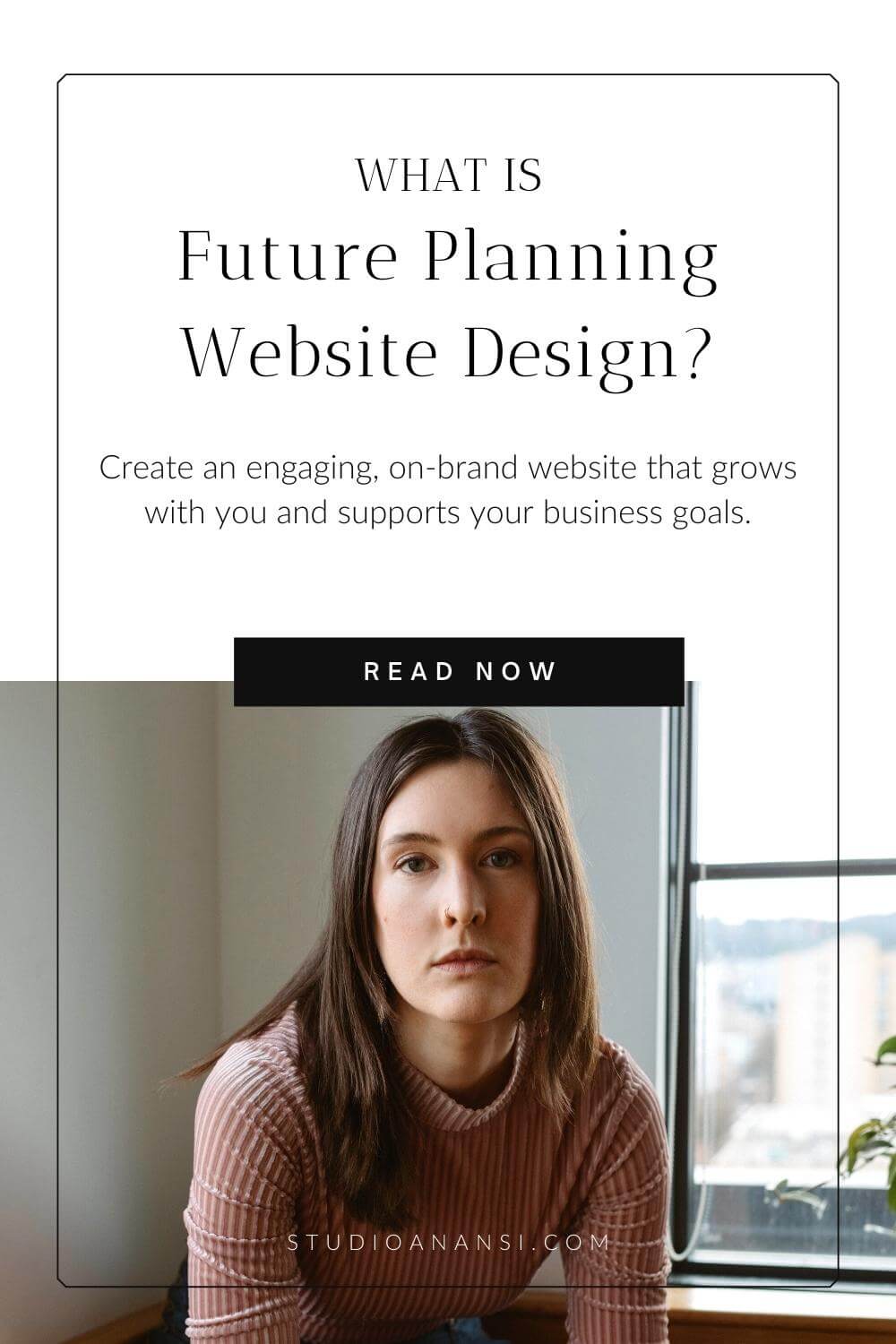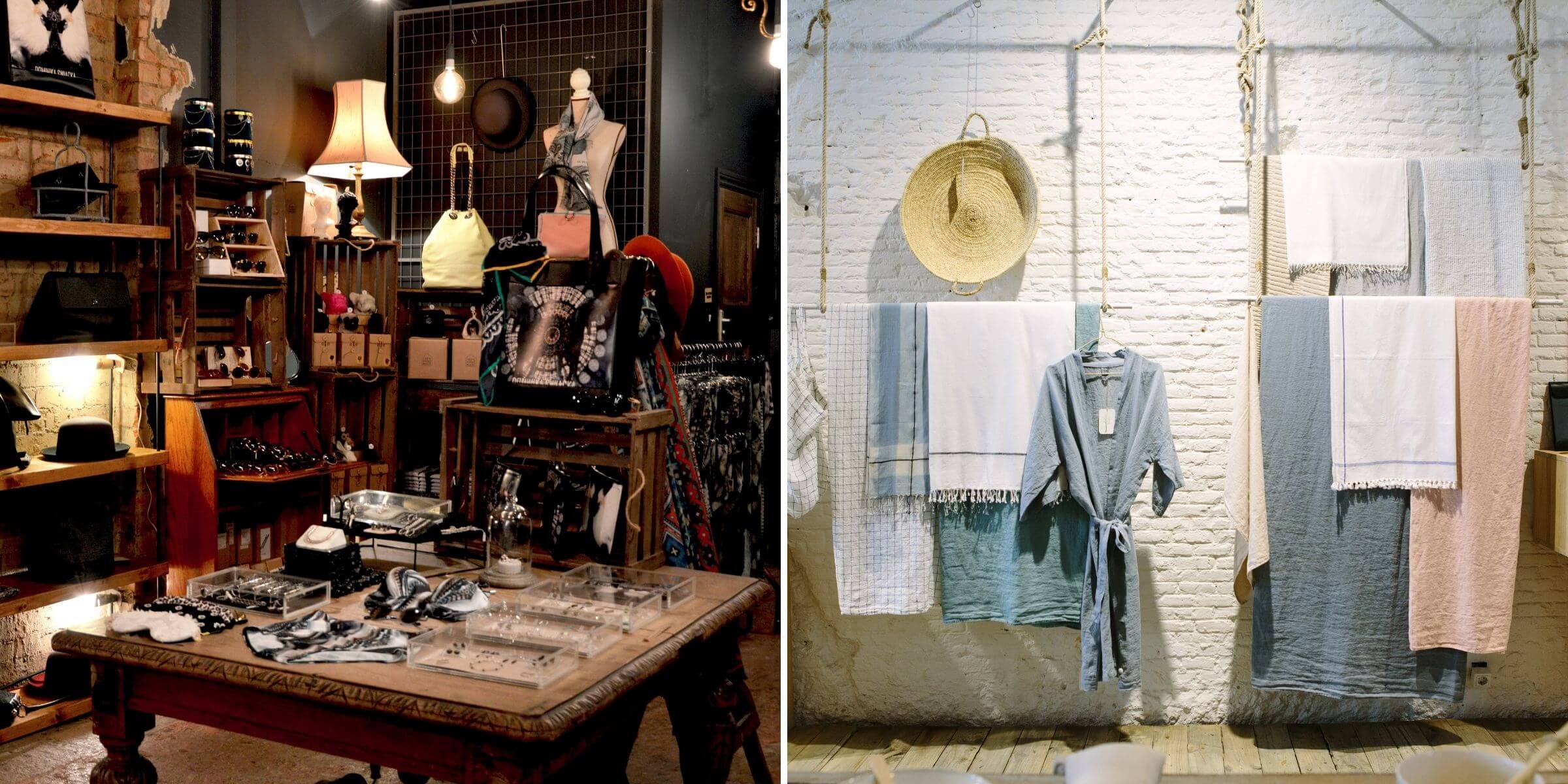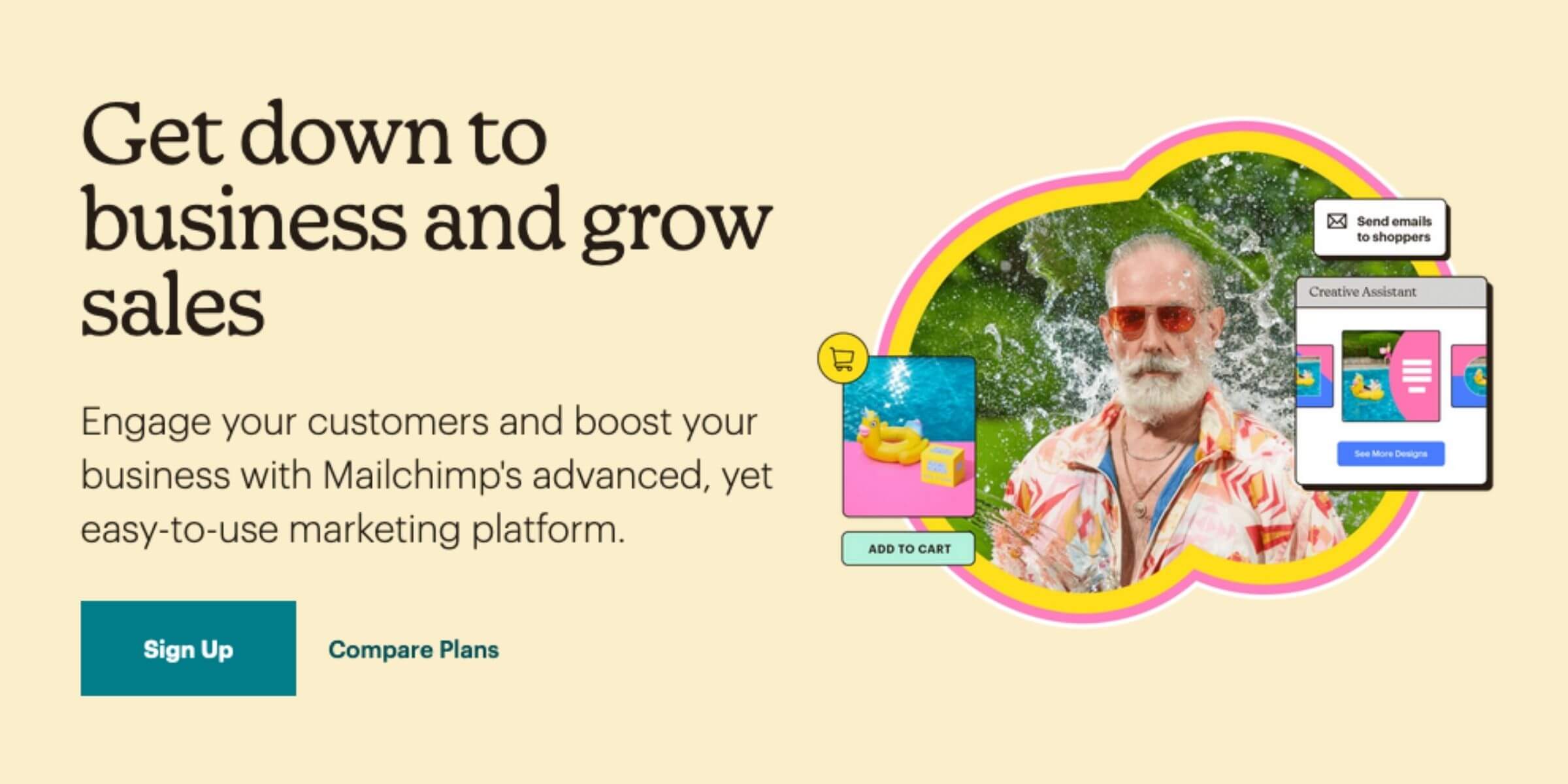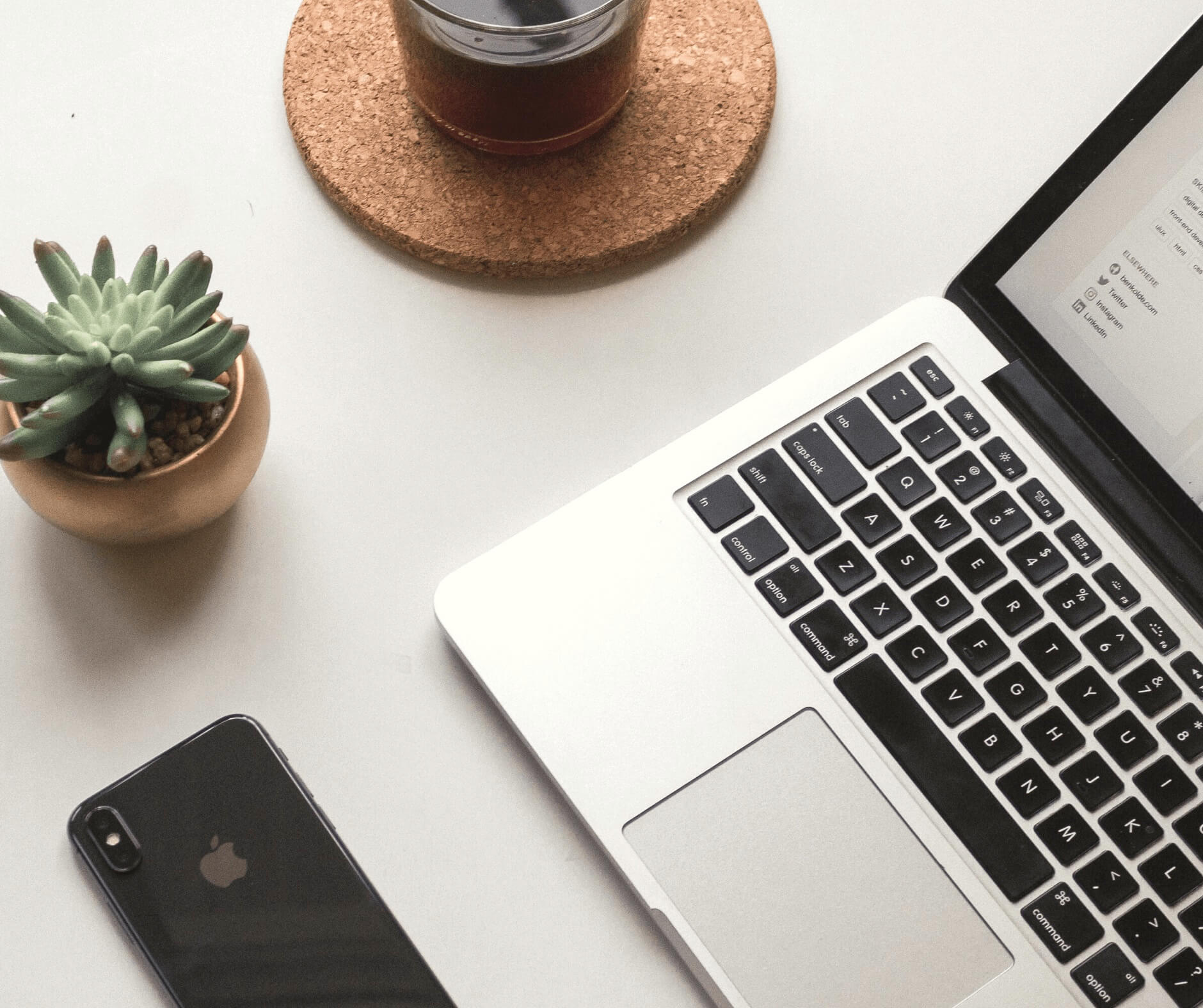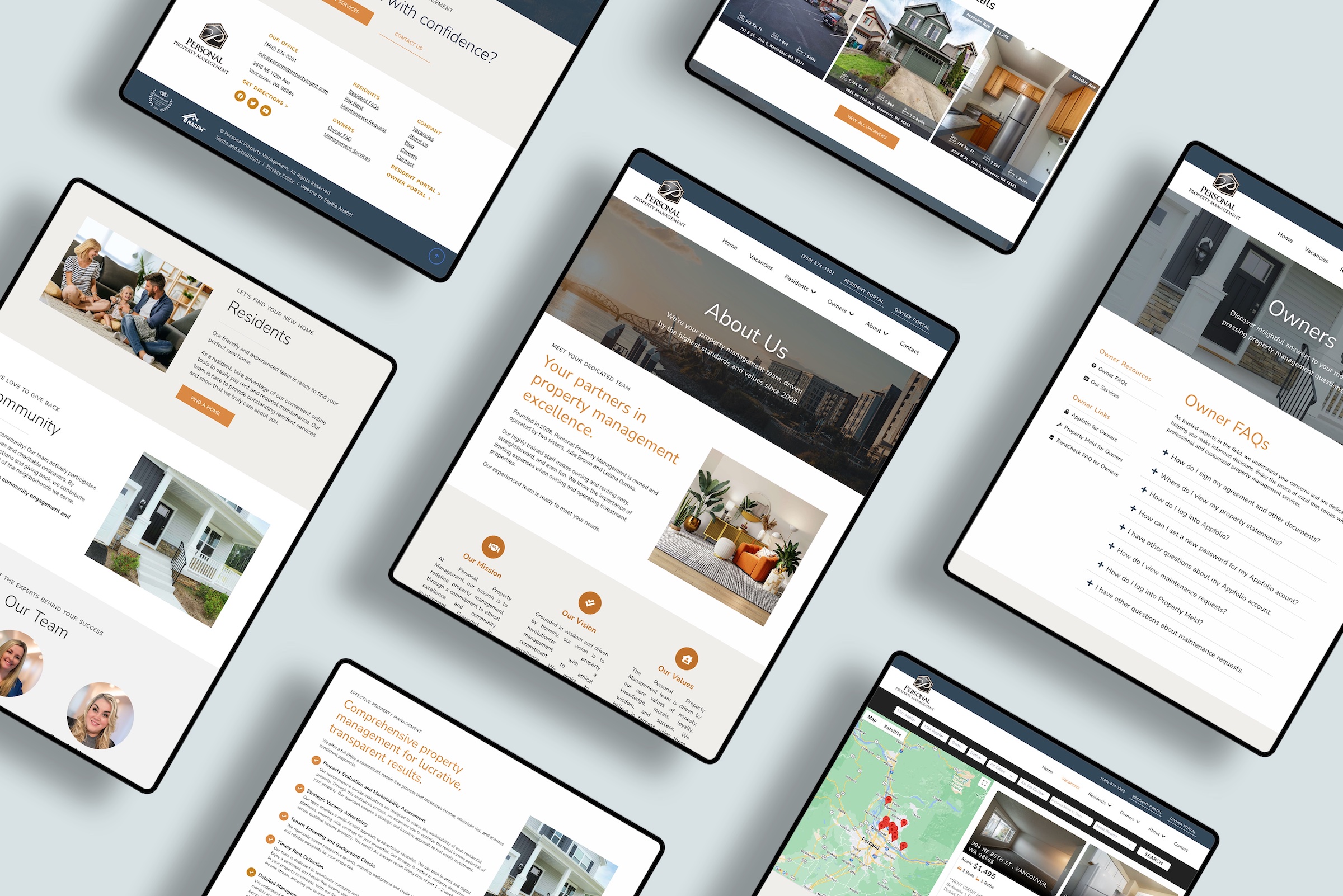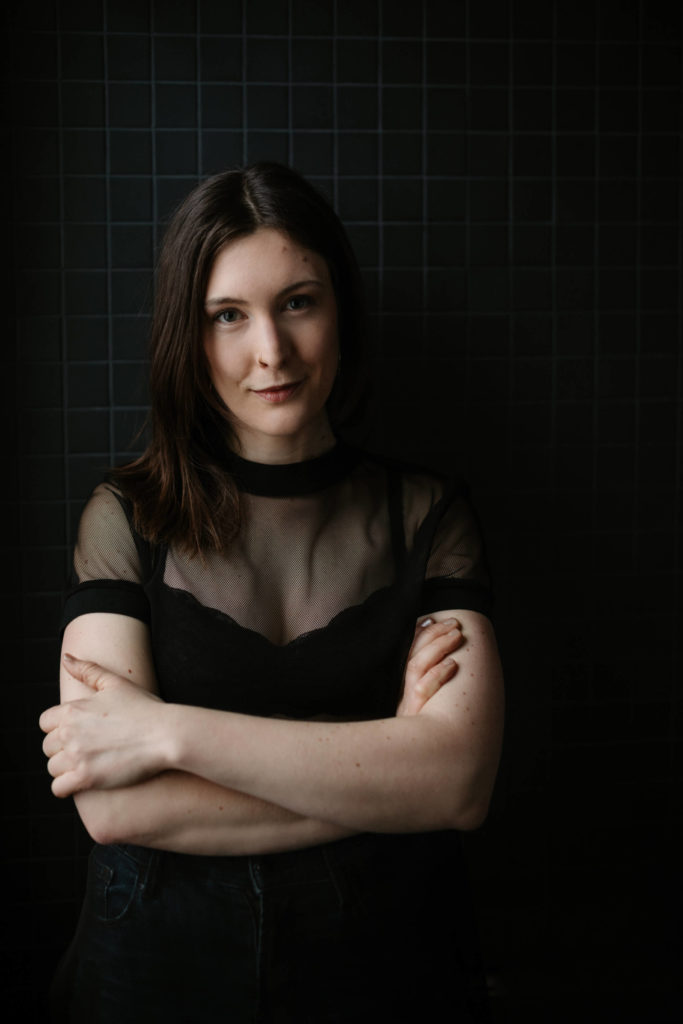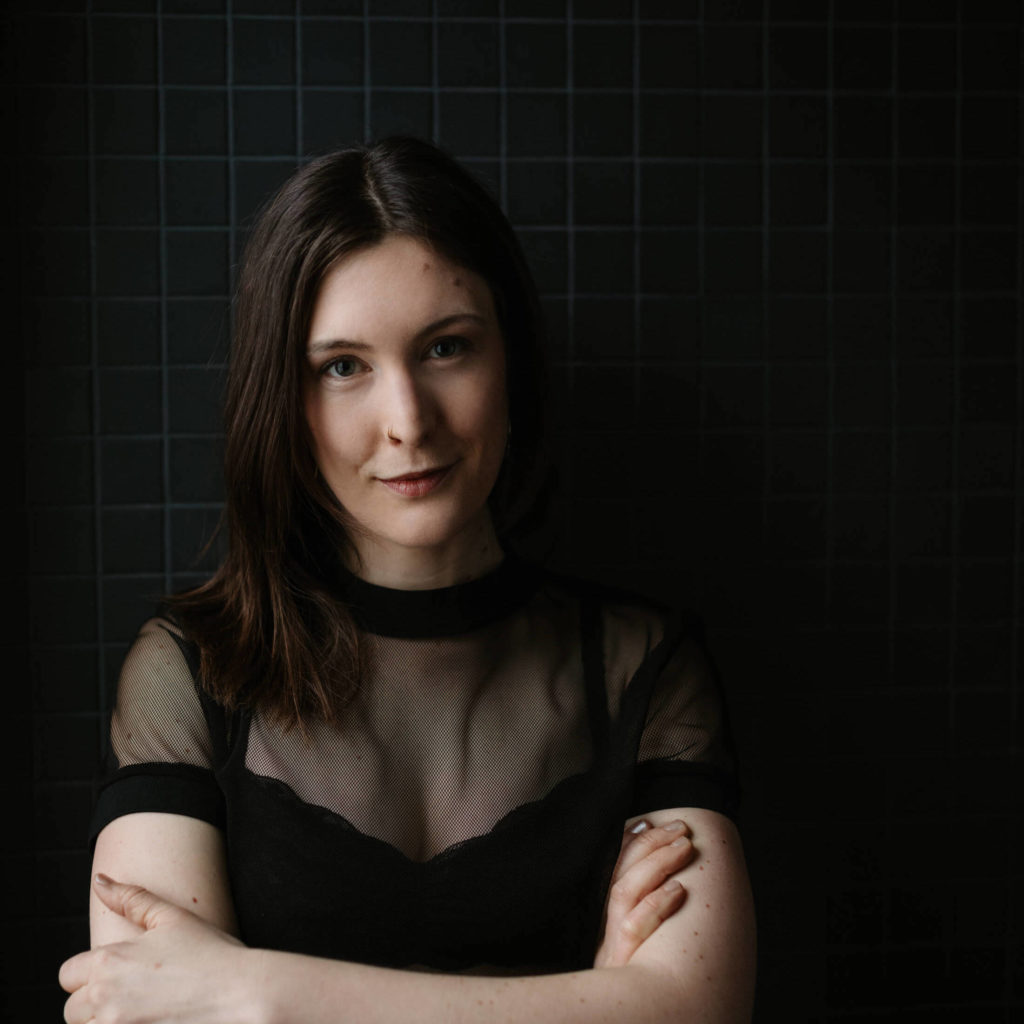Wondering about the steps to plan your new website? Don’t skip future planning website design. Future planning is key to creating an engaging, on-brand website that grows with you and supports your business goals.
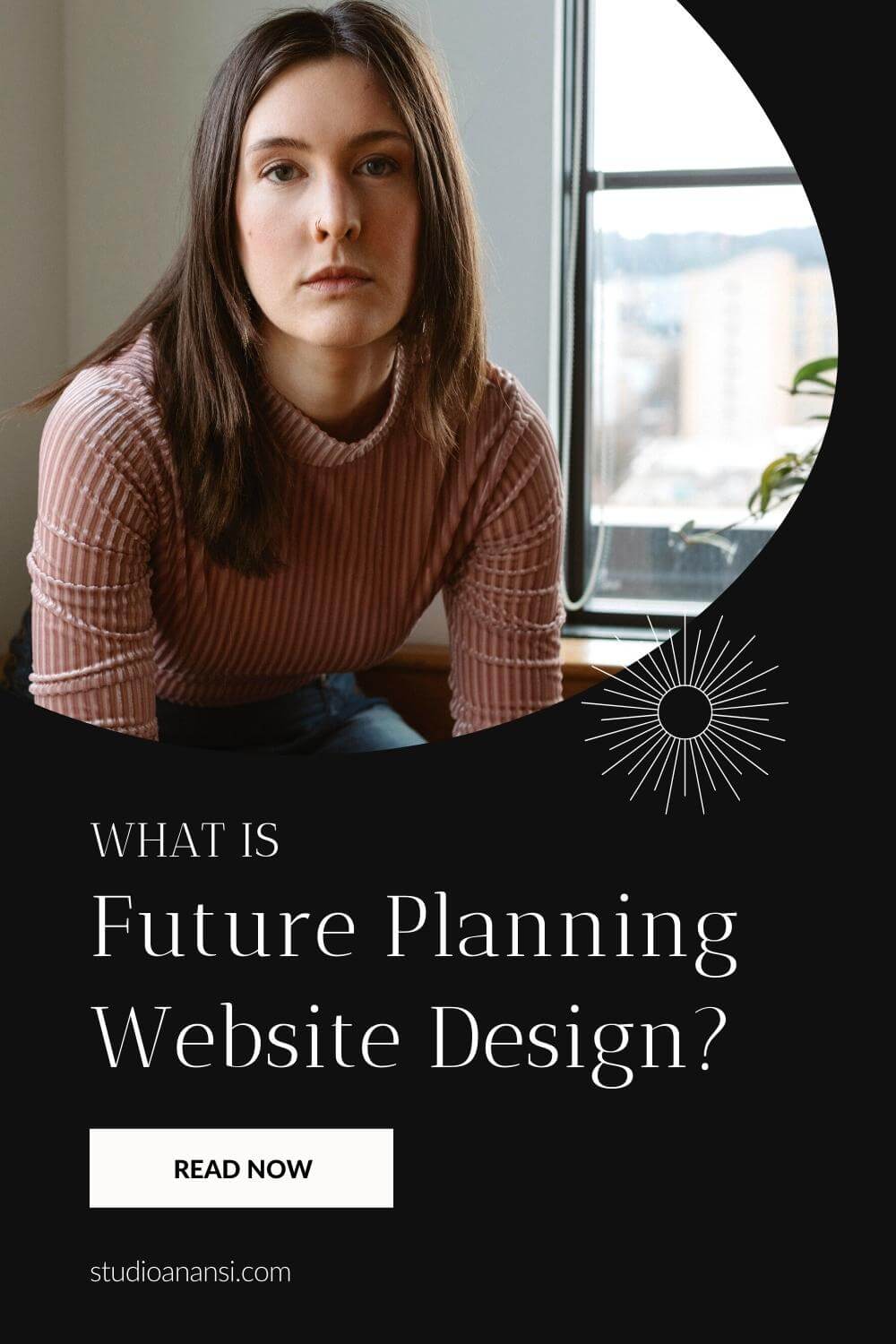
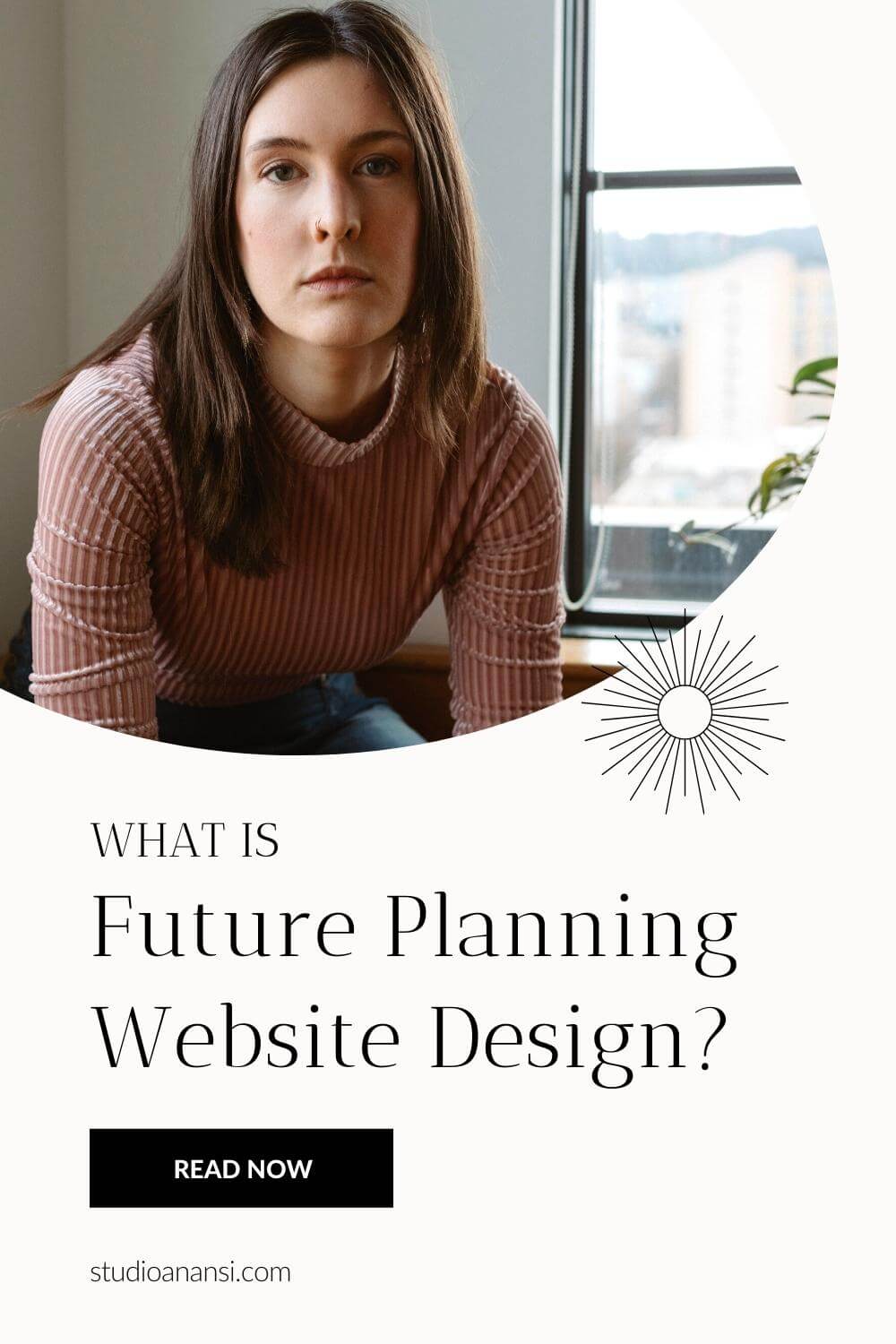
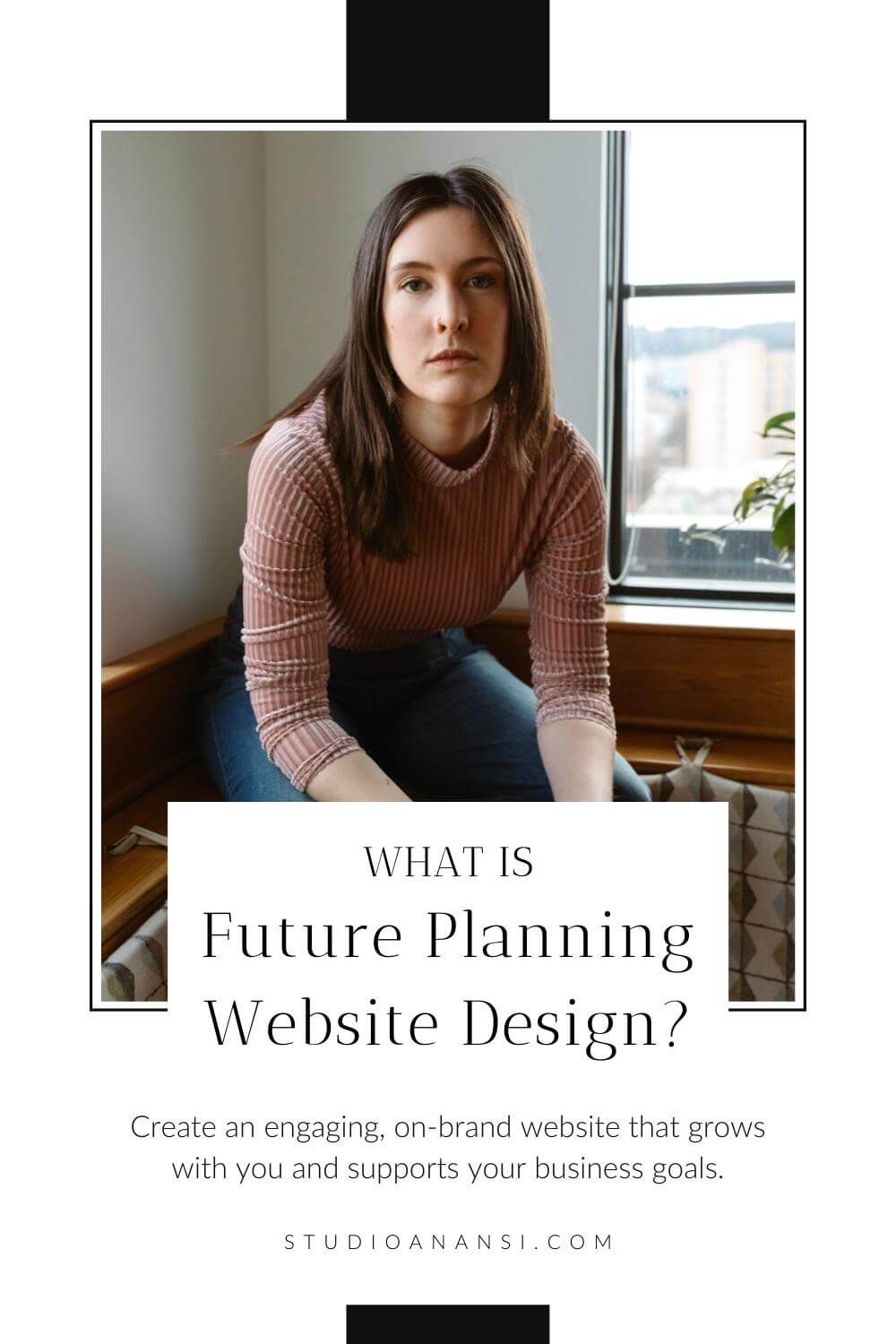
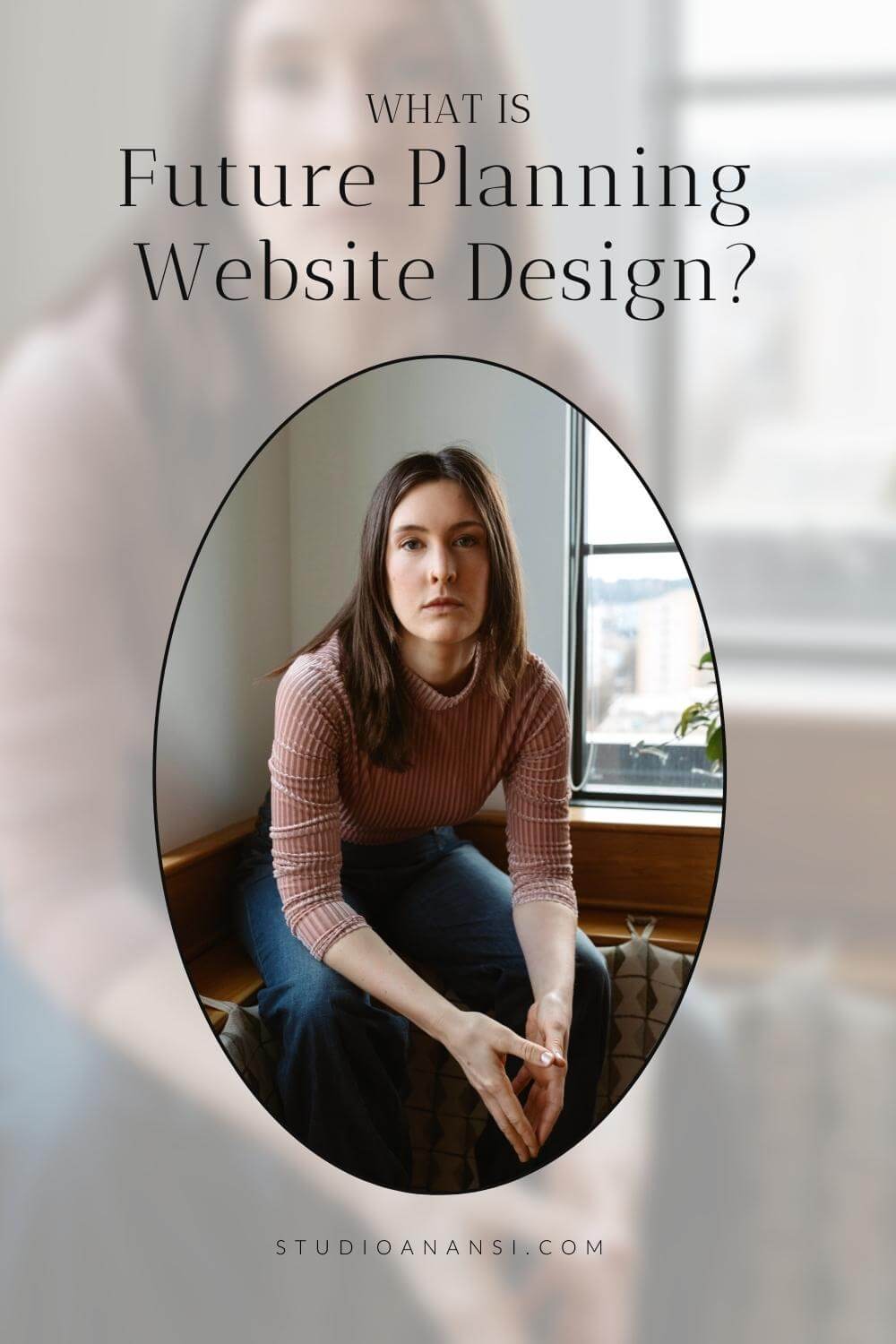
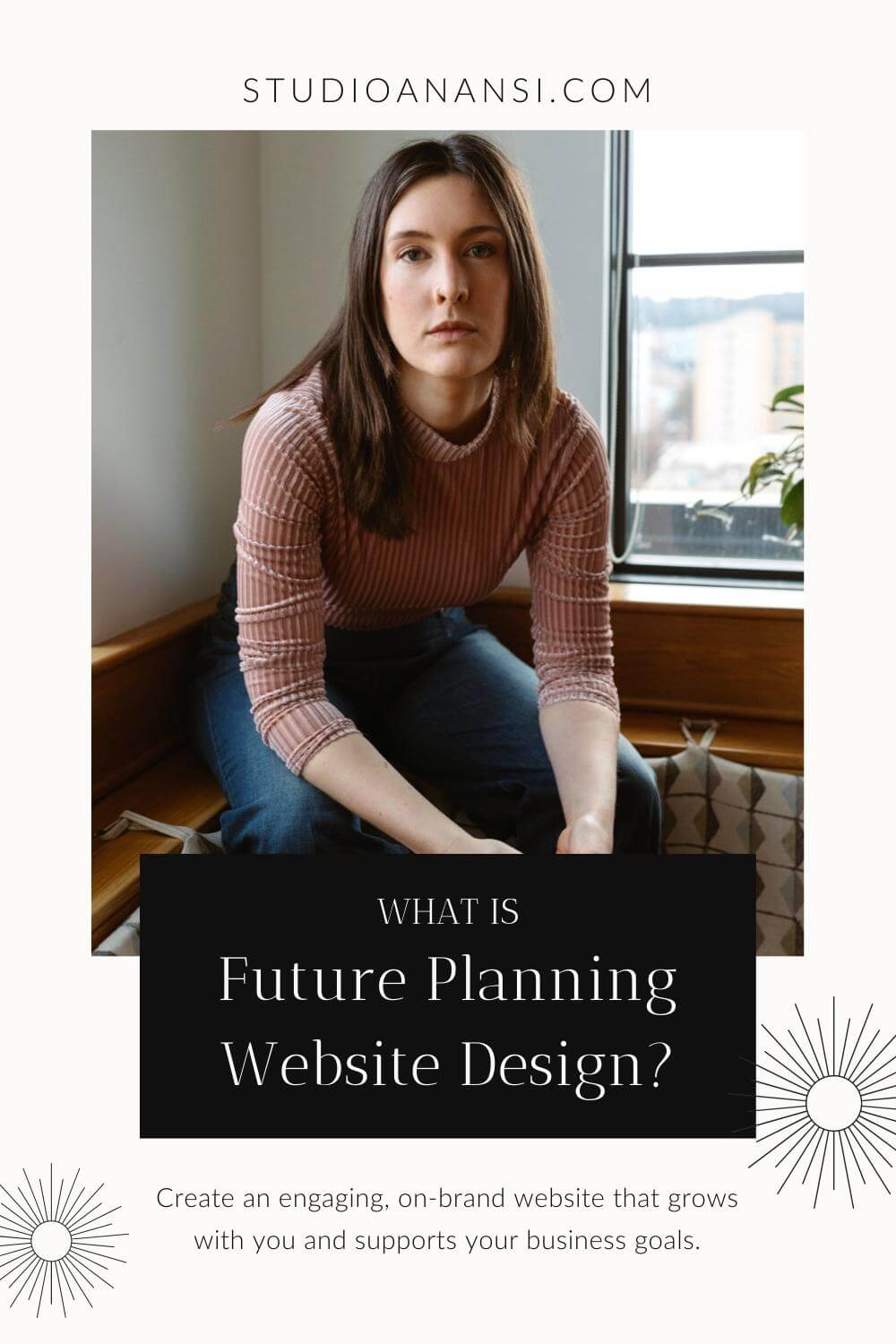
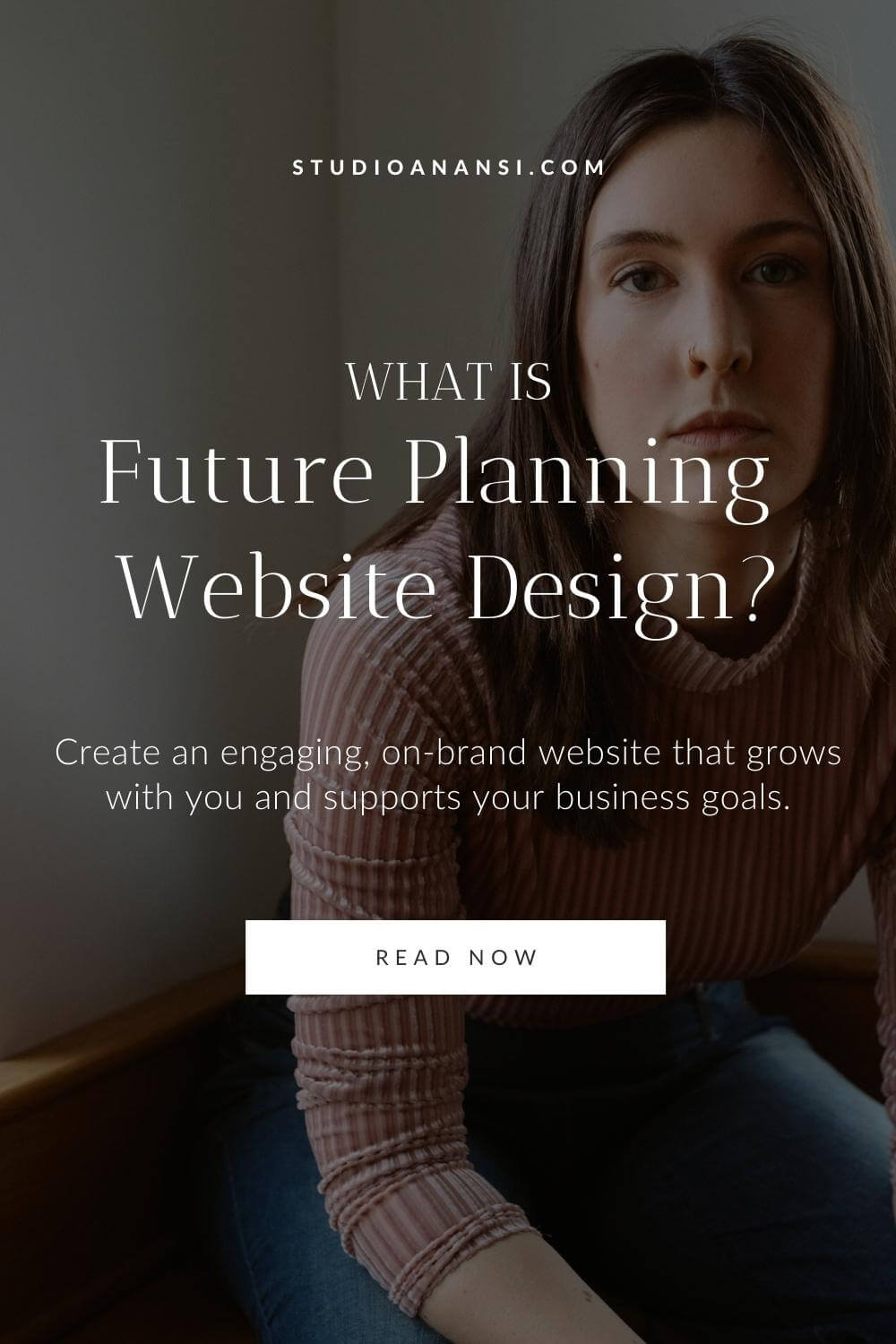
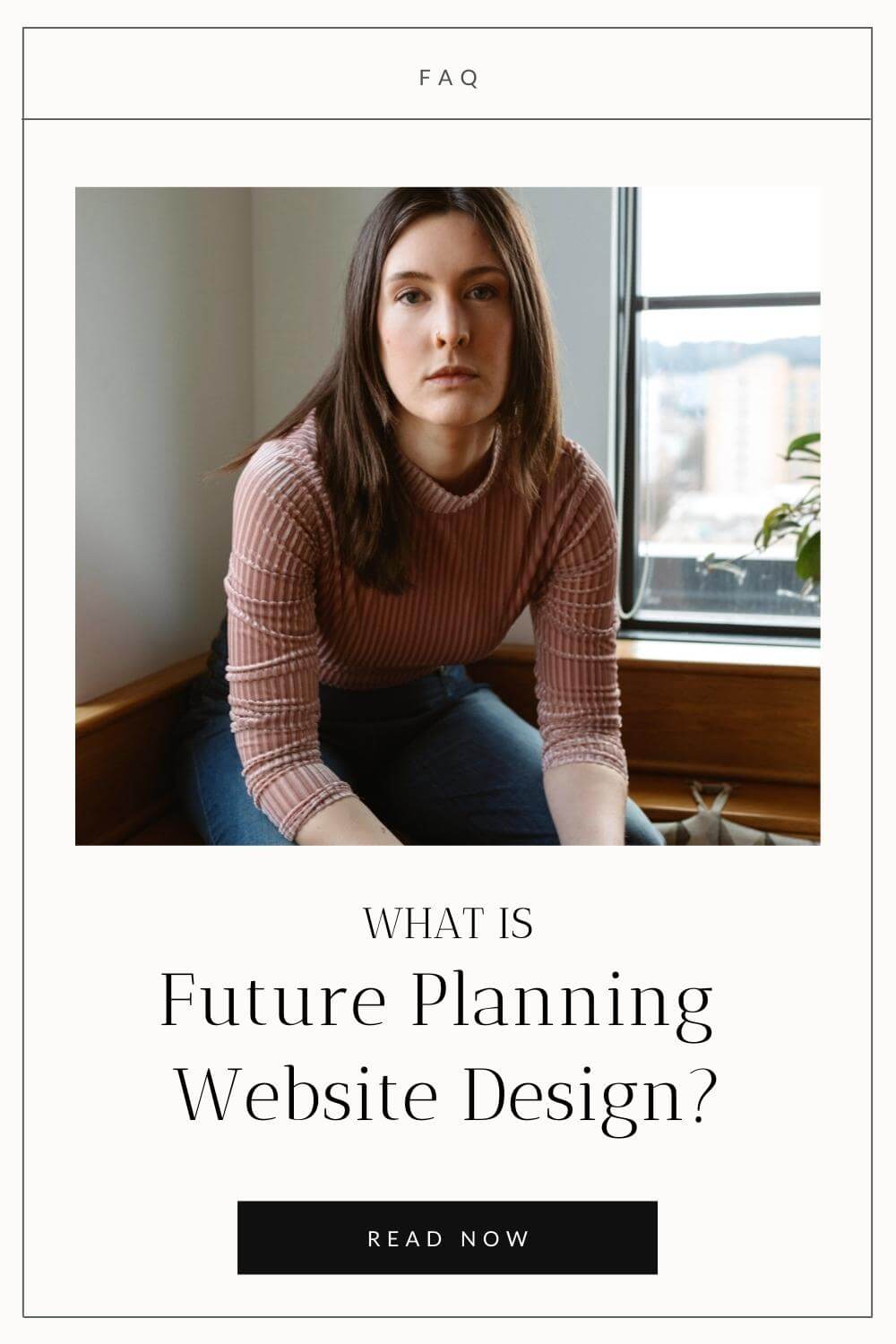
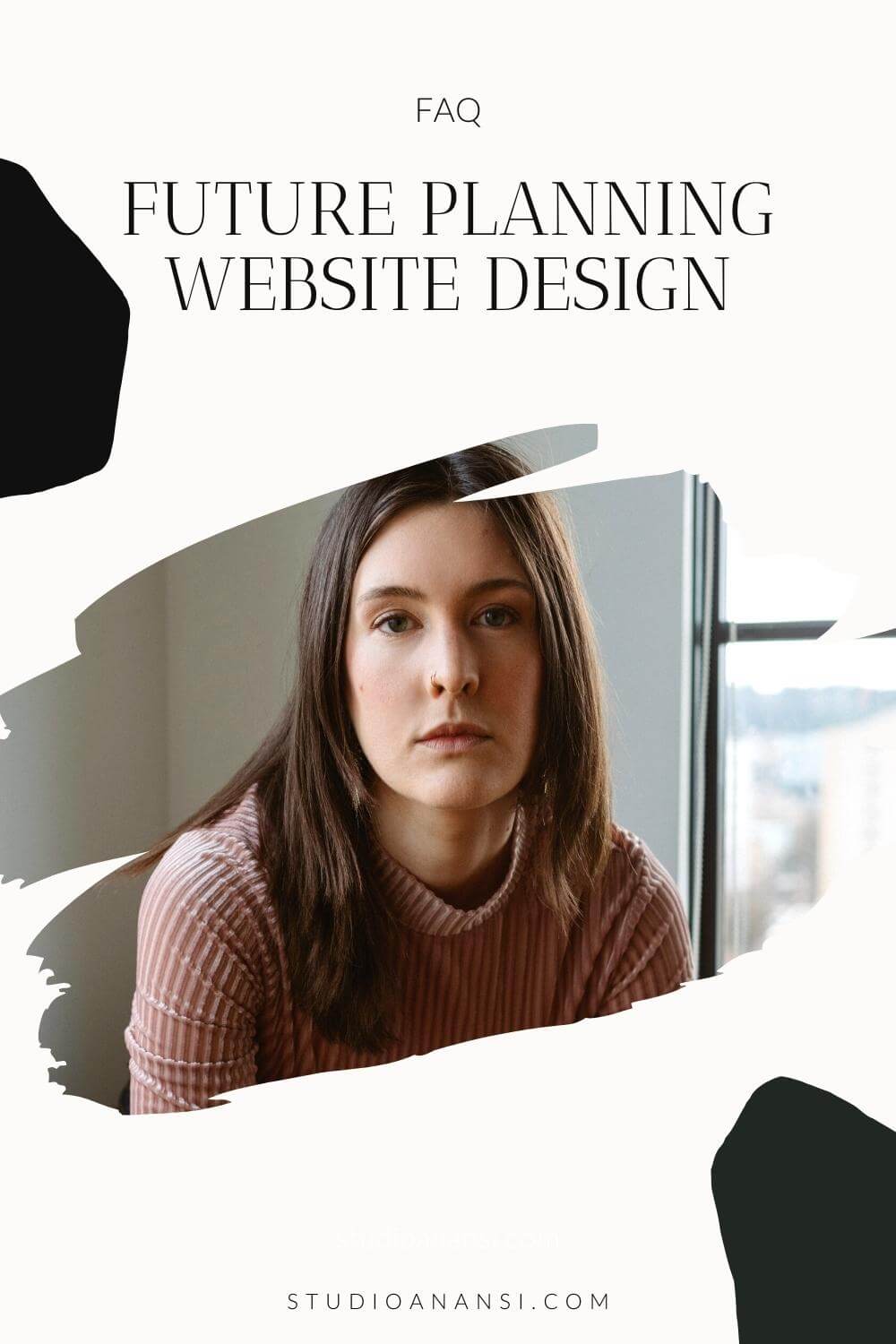
All too frequently, I hear from business owners who aren’t happy with their websites.
Many of them hired a website designer or agency to build their site. They’re frustrated that after spending money (sometimes a lot of money) on a new site, they now feel like the website isn’t right for their business.
The design feels outdated.
The content is no longer aligned with their brand.
The platform won’t let them add a shop or blog.
These problems aren’t necessarily the fault of their old website designer. The designer was hired for a specific job, and oftentimes they completed that job incredibly well for that specific time period.
But a website isn’t a static thing.
A good website should evolve and adapt as your business grows and the Internet changes.
Why does this evolution matter?
Because your website is an extension of your business.
Your site may be a small part of your marketing, or it may be the main pillar of your marketing strategy.
Either way, your website must continually create a positive experience for your visitors.
Think about visiting a brick-and-mortar store. As soon as you walk in the door, you form an impression of the business.
Is the store well organized? Is the lighting just right? Are the displays attractive?
Or does the store smell funky? Is the lighting too dim? Are shelves cluttered with products packed tightly together?
Right away, you start to know the brand based on the physical store.
Just like a store or office is your business’s physical home, your website is its online home.
In fact, your website may be the first place a potential customer or client interacts with your business.
Over the past decade, I’ve seen time and again — it isn’t enough for a website to be “fine” or “good enough for now.”
A website that aligns with your brand, welcomes your visitors, and supports your goals is crucial to your growth.
That’s where future planning website design makes a difference.
👉 Want the summary? Get the Future Planning Web Design guide now.
Three Characteristics of Future Planning Website Design
Future planned websites are designed for growth.
Future planning website design means thinking about upcoming business goals. It means choosing a platform and designing a website that can grow alongside your business.
If you aim to add a blog in the next few years, your website should be able to support that goal. If you don’t currently sell products online but you plan to add an online store, you’ll want a platform that can handle e-commerce.
Future planning your website design will save you money and time down the road by setting you up to accomplish your business goals.
Future planning website design is focused on creating positive visitor experiences.
Your website navigation, colors, text, images, videos, and overall experience must be inviting and comfortable for your ideal audience.
After all, what happens when people are uncomfortable on a website?
They leave.
And you miss out on potential or recurring sales.
Future planning helps you welcome online visitors by focusing your website design on your audience. It means thinking about your business goals to develop client personas and cater to those ideal clients.
Above all, future planning website design is holistic — from your brand to your page layout, every element has a purpose.
Future planning website design means approaching every decision strategically.
Seriously.
There are zero slapdash font choices, color combinations, or webpage layouts.
Instead, decisions are based on your end goal. The design process begins by crafting your holistic website strategy and working backward from the big picture.
This process can surprise for clients. Many people expect a just website design, rather than hours of research and strategy. After all, aren’t they hiring a designer?
But I’ve found that strategy is everything.
To design a successful website, your web designer must know about your goals, your current problems, and your ideal audience.
Think of it like designing a house. An architect wouldn’t immediately start ordering new doors as soon as they’re hired. Instead, they start by designing a plan (hopefully with you, since it’s your house!) and laying a strong foundation.
The same is true with websites. As a website strategist, I know that by starting with the big picture, the final result will align better with your business goals and growth.
How do I know?
I’ve designed digital strategies and websites for small business owners and entrepreneurs for nearly ten years. In my experience, future planning web design leads to incredible results.
Future planning in web design means better user experiences, increased conversions, and improved SEO.
Better user experience
UX is a huge part of future planning website design. You need a website that accomplishes your goals — and a satisfied, loyal audience is usually crucial to fulfilling those goals.
Thinking from the perspective of your customers means they’ll have a better experience. Good UX includes…
- Navigation makes sense
- Important information is front and center
- Checking out is straightforward
- Your contact page is easy to find
Future planning web design anticipates the needs of your users and designs your website to fulfill those needs.
Trust me, your online visitors will thank you for making their online experience easy and comfortable.
Future planning website design increases conversions.
Future thinking web design eschews sleazy marketing. Instead, your website speaks to your ideal audience and converts them into customers.
When visitors enjoy your website, they’re more likely to return. They’re more trusting of your brand. And they’re more prone to actually convert from visitors into clients.
Increased conversions mean more sales for you. And at the end of the day, your business does need sales.
A strategic website increases conversions naturally by showing your ideal customers how you’re the best fit for them.
That’s a win-win.
Future planning website design improves SEO.
Future thinking web design also naturally improves your SEO.
SEO is its own huge branch of strategy. The short summary: when visitors spend more time on your site and engage with your content, their activity demonstrates to search engines such as Google that your site is active and relevant.
The more people engage with your site and content, the better your SEO. Plus, thinking about your future business goals means that your website can support your SEO needs now and as you grow.
Read more: Complete Guide to WordPress SEO
Future planning website design saves you time, money, and heartache.
There are no two ways around it, future planning web design is a big investment.
To be truly strategic, your website designer will spend a lot of time and effort digging into your goals, challenges, brand, and audience.
The good news?
Investing now will save you tons of resources in the future.
By knowing your goals and designing a website that supports those goals, you save yourself from having to change platforms in the future, or hitting a ceiling with what your website can accomplish.
Future planning frontloads your website investment in order to set you up for success down the road.
Plus, you get an on-brand website that speaks to your ideal client right away.
That’s yet another win-win.
What are the steps in future planning website design?
Future planning website design is similar in many ways to traditional web design. In fact, you may see several steps you recognize if you are already familiar with web design.
The difference?
Future planning website design requires a massive early commitment to planning. Prepare to invest heavily in strategy before even reaching the traditional design phase.
Trust me.
That investment pays for itself many times over.
👉 Everything you’re reading…in one easy reference. Get the Future Planning Web Design guide now.
Choose your website designer
It may seem strange to start with picking your website designer, but this step is first for a reason. You want to find a designer whom you “click with” in terms of values and communication.
Communication with your designer matters. A lot.
Good communication will help the design process flow smoothly. You’ll always know the next steps and what to expect for your site. You’ll trust your designer’s recommendations and know that they have your best interests at heart.
Bad communication will sink your website design project. I’ve seen it happen, where the client is unhappy because they feel ignored or that they aren’t getting what they expected. Or the designer is unhappy because they feel ignored (see a trend here?) or that the design is a moving target.
Talk to a few designers to find one who really fits with your communication, whom you trust, and (ideally) who has a portfolio you like.
If they’re a good fit, your designer will then help you through the next steps, from identifying your website visitors to thinking strategically through your online goals.
Define your brand elements
Do you already have brand guidelines?
If so, fantastic! Share them with your designer so that they can use your colors, fonts, and aesthetic standards during the design process.
If you don’t have brand guidelines, you need them before moving on to the website design. Brand guidelines record your logo, fonts, and brand colors. They help create cohesion across your online and offline presence, and they foster trustworthiness and professionalism.
Even brands that are known for goofiness and humor (looking at you, Mailchimp) are still goofy and humorous within their brand guidelines.
If you don’t have brand guidelines, some web designers offer brand guidelines as an add-on for website design services.
Other designers will ask you to work with a brand designer first and then circle back to web design once your brand is nailed down.
Read More: How to Create Elegant Website Brand Guidelines
Either way, you need a brand before you move on to the next steps.
Identify your ideal visitor
Knowing your ideal website audience is absolutely crucial when it comes to website design. Your visitors will determine your best content, plus how that content is structured and arranged.
Your ideal visitor is the perfect customer or client that you wish for every day. Think about demographics such as…
- Age
- Gender
- Location
- Language
- Income
- Family
Build a visitor persona by putting yourself in their shoes.
- What are their interests?
- What other websites do they spend time on?
- How did they find your website?
- Did they hear about it from a friend, find it organically on Google, or were they recommended by a coach?
Knowing your ideal visitor is essential for designing a site that welcomes your audience.
Keep in mind that your current visitors may not be your ideal visitors. And if your current audience isn’t the same as your ideal client, it can be scary to commit to a new visitor persona.
But you do need to commit to your ideal audience.
Design for the audience you want — so when those ideal visitors are on your site, they know they’re in the right place.
Write down your business goals
Articulating goals is a key element in future planning web design. Your designer must know your goals in order to craft a website that strategically supports you.
Plus, identifying specific goals will help protect your extremely limited business time and attention.
There’s always going to be an upcoming product to launch. A new marketing tactic to test. An event to schedule. A holiday to plan around. A birthday to attend.
You get the idea.
Your time is limited. The demands on your time are not.
Creating specific, actionable goals will help focus your limited resources on the projects that really matter.
Read More: Set Strategic Goals to Grow Your Business and Free Up Your Time
Write down your top three goals both in the short term (next six months) and the long term (next five years).
Then share those goals with your web designer so they know what to prioritize on your new website.
Write down your website goals
Yep, more goals!
You have your business goals. Now it’s time to define your website goals.
At Studio Anansi, we work co-creatively with clients to identify the key goal for each client site.
Every website should have one main goal. Such as…
- Selling your products or services
- Raising awareness about your brand
- Building community with a membership site
- Driving audience views of your video collection
No matter the goal, your designer should make sure that it’s front and center throughout the website design process.
Each of your individual website pages may have slightly different goals, but they should all work towards the overarching goal of your website.
Visit your competition
It’s time to visit the competition.
Our Studio Anansi web design process has clients identify competitors. We visit those websites to get a feel for…
- What content they include
- How they organize their content
- What images and language they use
There are two things accomplished with this research.
First, it shows us how your competitors organize information and what they prioritize. This tells us what information visitors will expect from your site.
Keep in mind that potential customers or clients will likely research options online. They will see competitors’ websites in addition to your site.
By researching your competition, we know what visitors see on other sites and therefore expect on your site. We can be sure that your site design actually meets their expectations.
Second, we also ask you to visit those websites. Seeing other sites oftentimes helps clients better articulate what they like and don’t like in web designs.
- Do you love a specific maximalist or minimalist style?
- Do you like a certain homepage layout?
- Do you think a checkout page is confusing?
- Do you think a site’s navigation could be improved?
Knowing what you do and don’t like about other sites helps narrow down what you want for your website.
Important note. This does not mean copying your competitors. In fact, looking at your competition helps web designers know what is prevalent in the field, and thus what to avoid in their new site design.
Sometimes clients adore other sites and ask for identical designs. Speaking from experience, it’s very frustrating to hear clients say “I like this website, so make mine exactly the same.”
Besides the ethics of stealing a website design (it’s bad!), copying an existing site doesn’t allow for customizations that help you stand out in your field.
If you’re really engaged in future planning web design, you should have unique goals, visitor personas, and branding that simply will not align with another website’s design.
Plan your content
Now it’s time for the next strategic step — planning your website content.
Your specific content will depend on your audience, brand, and goals. Here are just a few examples of content types:
- Text
- Photos
- Videos
- Animations
- Navigation
- Galleries
- Products
- Checkout pages
- Membership areas
- Email list
- Blogs
- Social media feeds
- Maps
Many web designers have a process to collect client content. At Studio Anansi, our onboarding forms include sharing site content. If you don’t already have content, we walk you through the process of writing text and finding photos online.
If your budget allows, this is a great time to bring in professionals.
Are you a professional website writer or photographer? If not, you probably don’t have extensive experience writing online copy or photographing for web displays.
Remember, your website is an extension of your business. You want the best, most optimized web content to represent your business.
Your web designer may suggest working with professional copywriters and photographers who can help you with targeted, on-brand content.
Or your web designer may have a team and offer in-house copywriting or photography.
Either way, your designer will need this content during the design phase.
Pick your domain name
Many businesses already have a domain name, in which case go on to the next step.
If you don’t have a domain yet, choosing the right domain is crucial. Your domain says a lot about who you are and what you do. Plus, your domain must reflect well on your business.
Some quick tips for picking the right domain…
- Use a domain that is short and easy to spell
- Register the .com version of your domain
- Test the pronunciation
- Check for awkward or confusing spellings (Aka please please PLEASE do not register penisland.com or superstorepensareus.com for your new stationery store)
Read More: Choose the Best Website Address: Your Domain Matters
Once you have a list of potential domains, you’ll purchase them from a domain registrar such as Namecheap.
Some web designers will have you do this step yourself. Others will register your domain for you.
I always recommend that clients purchase a domain themselves or set up a new email address for me to use when making purchases on their behalf.
Why? More future planning, this time on my behalf. Not that I plan on being hit but a bus — but just in case, I want all Studio Anansi clients to always have access to their domains in the future.
Choose your website platform
Choosing the right website platform (aka CMS, content management system) is an incredibly important step.
If you choose the right platform, you’ll be happily set up for years.
If you choose the wrong platform, you may quickly hit the limits of your website’s abilities.
You may want to add an online store…but your current website doesn’t support e-commerce.
Or you go to integrate with a new social media tool…but your platform is limited to outdated options.
Or you try to add new galleries…but your monthly website fee will double or even triple.
I see those types of situations too frequently. It’s heartbreaking to tell a small business owner that their expensive website isn’t capable of supporting their future growth.
Trust me, it gets very expensive to change platforms in the future.
Before you choose your website platform, review your website and business goals again. Ask yourself…
- What do I need my website to do now?
- What features are essential?
- What would I like to add in the future?
- What’s my budget?
- Who will maintain my website?
- How comfortable am I with the website tech?
Knowing those answers will help you narrow down the CMS options.
Full disclosure, I’m a WordPress gal. Over the years, I’ve tested platforms from Squarespace to Shopify. I now build exclusively on WordPress, and I think it’s the best platform for many small businesses and entrepreneurs.
Read more: Why WordPress? 5 Reasons You Should Use The World’s Most Popular CMS
Design and feedback
Finally! We get to the design part of designing your website.
During this phase, your designer will layout pages and solicit your feedback.
Every designer has a different process. Some provide mock-ups, while others go straight into building pages. At Studio Anansi, we design your homepage and at least one subpage for feedback before we build the entire site.
No matter their process, it’s important that your designer share clear expectations and the timeline.
You may have a lot of communication.
You may have very little communication.
You may go weeks without hearing anything at all.
Your designer must be upfront about what you can expect in terms of communication, feedback, and edits during the design process.
User testing
Testing is an essential part of every web design project.
Tests include running through the site to confirm…
- Do navigation menu links work?
- Is all content updated from filler text?
- Are headings set correctly?
- Do images display on all devices?
- Are forms working?
- Is the checkout process working?
At Studio Anansi, we test all of our website designs on a variety of browsers and devices, especially mobile. After all, we want to ensure that your website audience will love your site no matter how they access it.
We also ask our clients to test sites themselves.
Why?
Well, we spend weeks and even months working closely with each client. We know the ins and outs of their business.
But at the end of the day, there’s always an extra level of familiarity between clients and their businesses.
During testing, clients may have questions about the navigation order. Why a particular image is featured. How the membership login is organized. If the checkout page can be edited. Where to add email confirmations.
We have found that it’s always best to address these questions and explain the rationale behind our design choices before your launch date.
Launch and promote
At long last, it’s time to launch your new website.
But a launch isn’t just a launch.
Launching a site without telling anyone is like opening a store in the rural highlands. You may have the most perfectly curated shop, optimized for your ideal clients…but if they don’t know where to find you, you won’t have many visitors.
After launch, you must promote your new website.
When your website goes live, announce the launch on your other online channels. Post on social media. Send an email. Tell people in your brick-and-mortar store.
Promoting your website brings in traffic, and that traffic translates into more growth for your business.
…
👉 One last chance. Get the Future Planning Web Design guide now.
Future planning website design isn’t the fastest or the cheapest option.
But if you’re serious about growing your business with a strategic website that supports your goals and wards off expensive mistakes, invest in a future planning website designer.
You’ll reap the benefits for years to come.
Have any questions about future planning? Thoughts on your website goals? Get in touch and let me know!
Ready for a strategic new website? For our current availability, inquire now.
